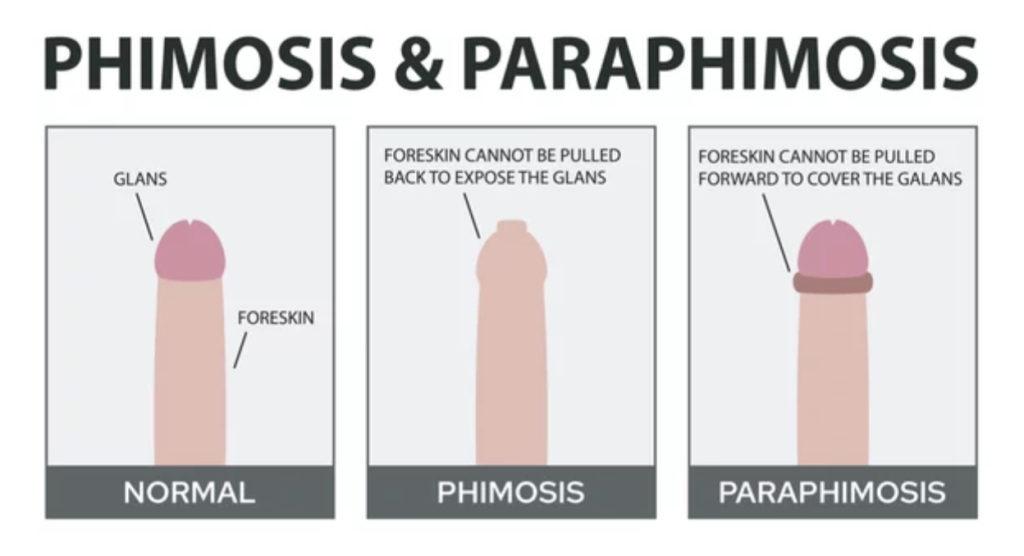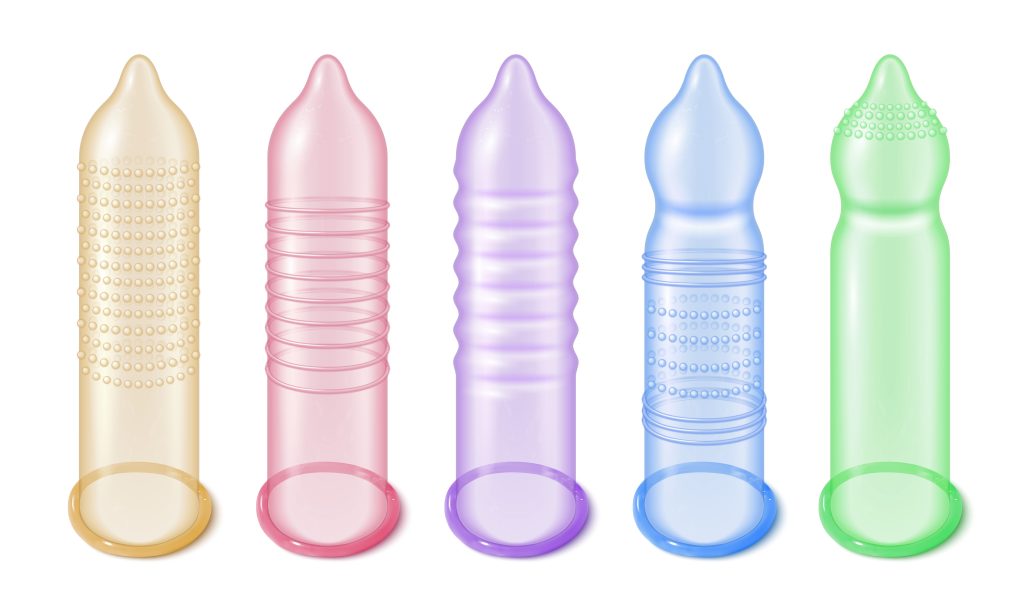Phimosis and Condoms: A Snug Guide to Safe Fun
Welcome to the wild world of condoms, where protection meets pleasure, and we’re all just trying to keep things safe and sexy! If you’re here, you might be curious about how phimosis—a condition where the foreskin is too tight to retract fully—plays into the condom game. Don’t worry; we’ve got you covered (pun absolutely intended). Today, we’ll dive into the ins and outs of phimosis, how it affects condom use, and tips to make your experience smooth, safe, and maybe even a little giggle-worthy. Let’s roll! (I am not sorry for all the condom puns.)
What’s Phimosis, Anyway?

Phimosis is when the foreskin of the penis is so tight that it can’t be pulled back over the glans (that’s the fancy term for the head of the penis). It’s more common than you might think, affecting about 10% of uncircumcised men to some degree, according to urology studies. It can be present from birth (physiological phimosis, which often resolves naturally in kids) or develop later due to scarring, infections, or inflammation (pathological phimosis).
Symptoms? Think tightness, discomfort, or pain when trying to retract the foreskin, sometimes with a side of irritation or difficulty cleaning under there. It’s not a punchline—it’s a real condition that can make sex, hygiene, and yes, condom use, a bit trickier. But fear not! With the right know-how, you can navigate this like a pro.
Condoms and Phimosis: The Tight Squeeze
Condoms are the MVPs of safe sex, slashing STI risks and keeping unplanned pregnancies at bay. But for folks with phimosis, rolling one on can feel like trying to fit a square peg into a round hole—or rather, a tight foreskin into a snug latex sleeve. Here’s why:
- Foreskin Retraction Issues: Most condom instructions assume you can retract your foreskin to expose the glans for a smooth rollout. With phimosis, that’s not always possible, which can make application feel like a wrestling match.
- Sensitivity and Discomfort: A tight foreskin can make the penis head extra sensitive. Add a condom’s friction, and it might feel like sandpaper on a sunburn (ouch!).
- Fit Frustrations: Standard condoms might feel too tight or cause pain if the foreskin is already stretched to its limit. Nobody wants a condom that feels like it’s staging a hostile takeover.
- Breakage Risks: If the condom doesn’t fit right or gets caught on a partially retractable foreskin, it could tear. And a torn condom is about as useful as a paper umbrella in a hurricane.
But don’t toss your condom stash just yet! There are ways to make this work, and we’re spilling all the tea.
Choosing the Right Condom: Size, Material, and More

When you’ve got phimosis, condom shopping isn’t just about grabbing the flashiest pack off the shelf. It’s about strategy, like picking the perfect weapon for a boss battle. Here’s what to look for:
- Go Big or Go Home: Opt for condoms labeled “large” or “extra headroom.” These have more girth to accommodate a non-retractable foreskin without squeezing the life out of you. Brands like our ONE Pleasure Dome condoms (shameless plug!) offer extra headspace for comfort.
- Material Matters: Latex is the classic choice, but some folks with phimosis find it too grippy. Try polyisoprene condoms, which are thinner and slicker, reducing friction. Bonus: they’re great for latex allergy sufferers. Our Lifestyles SKYN Non Latex Condoms are a fan fave. Bonus: they come in a bunch of different varieties like Elite Thin and Studded.
- Lube It Up: Look for pre-lubricated condoms to minimize drag. If you’re adding your own lube (and you should), go water-based to avoid degrading the condom. A little slip-and-slide action can make application a breeze.
- Non-Restrictive Tips: Some condoms have a reservoir tip for semen, but for phimosis, a roomier tip can reduce pressure on the glans. Most Trojan Condoms have a relaxed tip that’s like a penthouse suite for your penis. Just double check the product listing because some do have a reservoir tip.
Pro tip: Practice putting on a condom solo first. It’s like a dress rehearsal—nobody needs to know you’re practicing your condom game in the bathroom mirror.
How to Put on a Condom with Phimosis (Without Losing Your Cool)
Applying a condom with phimosis requires finesse, not force. Here’s a step-by-step guide to keep things sexy, not stressful:
- Check the Goods: Ensure the condom isn’t expired and the package is intact. A dud condom is nobody’s friend.
- Lube First: Dab a small amount of water-based lube inside the condom’s tip. This reduces friction and makes it easier to slide over a sensitive glans.
- Don’t Force Retraction: If your foreskin doesn’t retract fully, don’t yank it. Gently pull it back as far as is comfortable (or not at all if it’s too tight).
- Roll It On: Pinch the condom tip to leave space for semen, then roll it down the shaft. If it snags, add more lube to the outside or try a larger size.
- Smooth It Out: Run your fingers along the condom to remove air bubbles and ensure it’s snug but not strangling.
- Post-Game Plan: After sex, hold the condom’s base as you withdraw to prevent slippage, then tie it off and toss it. No need for an encore.
If it hurts or feels wrong, stop. Pain is your body’s way of saying, “Houston, we have a problem.” Try a different size or consult a doc.
When to See a Doctor (No, It’s Not Embarrassing)

Phimosis isn’t always a dealbreaker, but if it’s causing pain, recurrent infections, or condom woes that no amount of lube can fix, it’s time to call in the pros. Urologists are like penis whisperers—they’ve seen it all. They might suggest:
- Steroid Creams: These can loosen the foreskin over time, like a gentle stretch class for your foreskin.
- Stretching Exercises: Guided by a doc, these can improve flexibility without surgery.
- Circumcision or Preputioplasty: In severe cases, surgery might be the ticket. Preputioplasty is a less invasive option that widens the foreskin without removing it.
Don’t let stigma stop you. Talking to a doctor about your junk is less awkward than explaining a condom mishap to your partner.
Busting Myths (Because the Internet Is Wild)
The web is a jungle of bad advice, so let’s clear the air:
- Myth: You can’t use condoms with phimosis. Truth: With the right fit and technique, condoms are totally doable.
- Myth: Phimosis means you’re “broken.” Truth: It’s just anatomy doing its thing. No shame here.
- Myth: Forcing retraction fixes phimosis. Truth: This can cause tears and scarring. Be gentle, folks.
Why Condoms Are Still Your BFF
Phimosis or not, condoms are non-negotiable for safe sex. They cut HIV transmission risk by up to 95% and slash other STI risks significantly, per CDC data. Plus, they’re a solid backup for birth control. Think of them as your penis’s personal bodyguard—stylish, reliable, and always ready to step in.
Shop Smart, Love Safe
At Condom Depot, we’re all about making safe sex fun, not frustrating. Our range of phimosis-friendly condoms—like the Durex Extra Sensitive and Kimono Swirl Condoms—is designed with comfort in mind. Pair them with our System Jo H2O Lube for a match made in heaven. Browse our site for sizes, materials, and vibes that suit your needs, and let’s keep the good times rolling (safely, of course).
Final Thoughts: Keep It Safe, Keep It Sexy
Phimosis might throw a curveball, but it doesn’t have to bench you from the safe-sex game. With the right condoms, a splash of lube, and a sprinkle of patience, you can protect yourself and your partner while keeping the spark alive. Got questions? Hit us up at Condom Depot (info@condomdepot.com)—we’re here to help you navigate the wild world of condoms with a smile. Now go forth, wrap it up, and have some fun!
